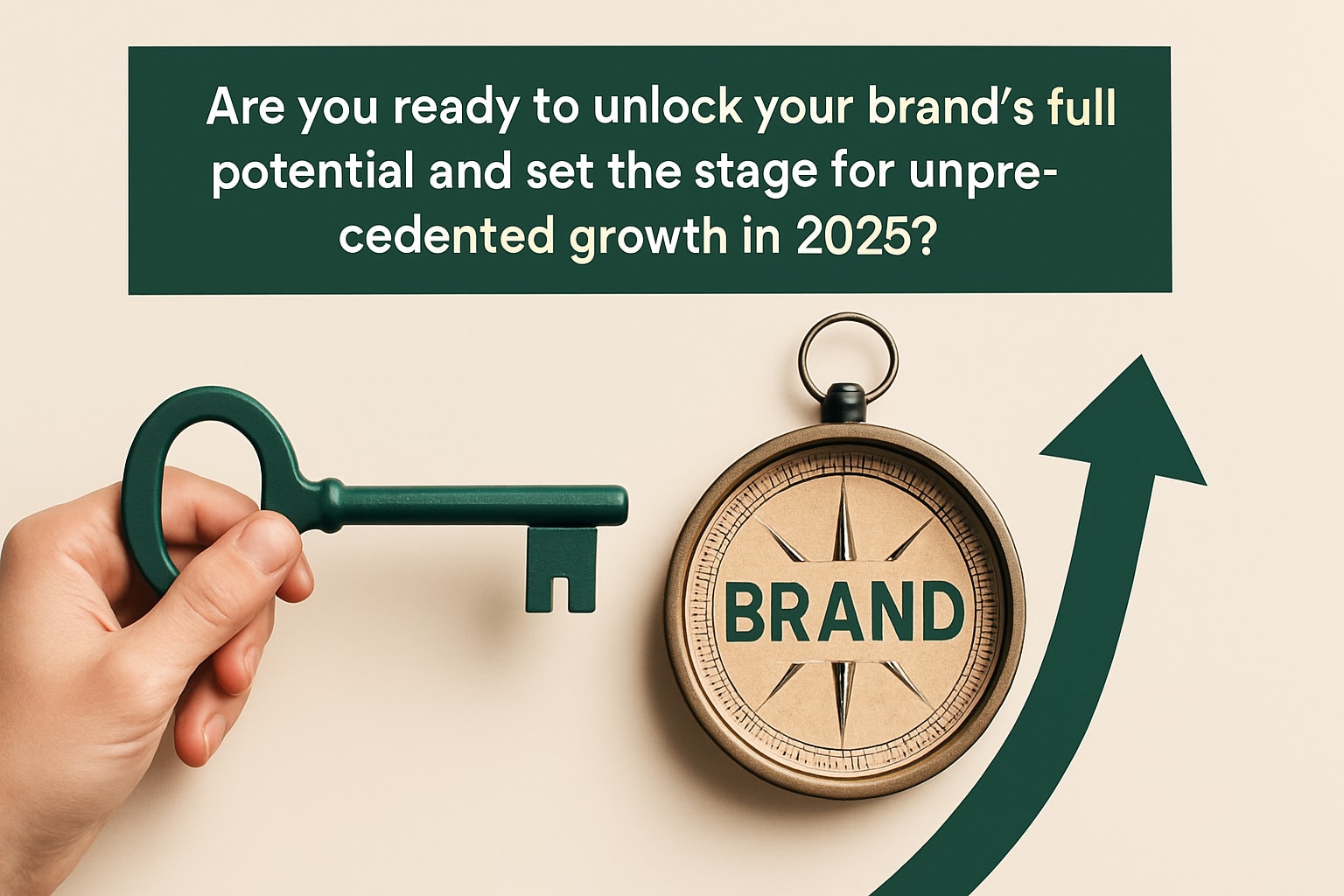
The Brand Company Guide: Your Roadmap to Success in 2025
Are you feeling the pressure to evolve as 2025 approaches? The market is shifting quickly, and the brand company that adapts will lead the way.
This guide is your step-by-step map for building, refining, and scaling a brand company that stands out in a noisy world. We will walk through proven strategies for positioning, messaging, digital visibility, leadership alignment, and future-proofing.
You’ll find practical insights, not just theories, so you can take real action. If you want to unlock new growth and clarity for your brand company, this is where your journey begins.
Understanding the 2025 Brand Landscape
Navigating 2025 means understanding how the ground beneath the brand company is shifting. As founders, we must tune in to what’s changing, from consumer values to technology and culture. Let’s break down the landscape so you can see where your brand stands and where it could go.

Shifting Consumer Expectations and Behaviors
The brand company faces an era where values drive decisions. People, especially Gen Z and Millennials, look for brands that echo their beliefs. According to Accenture, 73% of consumers now prefer to buy from brands that align with their values.
Transparency isn’t optional. Customers expect to know where products come from and how companies operate. Authenticity and ethical practices are no longer buzzwords, they are baseline expectations.
If you want to dig deeper, Global Consumer Trends 2025 explores how personalization and shared values increasingly shape loyalty. For the brand company, tuning into these shifts is essential for lasting relevance.
The Impact of Technology and AI
Technology is rewriting the rulebook for the brand company. AI now personalizes the customer journey, making every interaction feel curated. Omnichannel experiences are standard—customers expect seamless transitions between online and offline touchpoints.
Look at Nike’s AI-driven customization or Sephora’s virtual try-ons. These tools don’t just wow users, they set new standards. The brand company must understand how to use AI for genuine engagement, not just novelty.
Staying current with these advances ensures your brand doesn’t just follow trends but sets them.
Competitive Pressures and Market Saturation
As more challenger and niche brands enter the market, the brand company must stand out. Differentiation goes beyond product features. It’s about telling a story that resonates and building an emotional connection.
Data from Harvard Business Review shows that 64% of consumers cite shared values as the main reason they form a brand relationship. Storytelling, not just selling, becomes your edge.
To thrive, the brand company should invest in meaningful narratives and nurture communities around what matters most.
Regulatory and Social Shifts
The brand company must also grapple with evolving regulations. Data privacy laws like GDPR and CCPA require transparency in how information is handled. Compliance is table stakes, not a choice.
Social responsibility and sustainability are now expected. Customers want proof that your brand cares about the wider world. The brand company gains trust by embedding these principles at every level.
This shift means that doing good and doing well are inseparable for modern brands.
The Rise of Founder-Led and Expert-Led Brands
In 2025, the brand company sees founders and experts stepping into the spotlight. Personal branding and executive presence are strategic assets. Think of Sara Blakely with Spanx or Elon Musk with Tesla... leaders shape perception.
Sharing authentic stories builds credibility. The brand company that lets its leaders’ values and vision shine will cut through the noise and inspire loyalty.
The Necessity of Agility and Adaptation
Change is constant. The brand company must pivot quickly, whether it’s refining messaging or shifting strategy. During the pandemic, Zoom’s agile response kept it top of mind.
Building systems for rapid adaptation is now essential. The brand company that stays flexible will weather disruption and seize new opportunities as they arise.
The 2025 landscape is complex, but with clarity and agility, the brand company can chart a course toward real, sustainable growth.
Building a Distinctive Brand Strategy
Building a distinctive brand strategy is the foundation for the brand company to stand out in a crowded market. Every decision, from purpose to performance, shapes how your brand is seen and felt by customers and employees alike.

Defining Your Core Identity and Purpose
Start with your why. The brand company must clarify its mission, vision, and values in ways that resonate both inside the organization and out in the world. Use frameworks like Simon Sinek’s Golden Circle or purpose workshops to dig deeper. Look at Patagonia, whose environmental activism is inseparable from its identity. When your core purpose feels real, it becomes a magnet for talent and loyalty.
Crafting a Compelling Brand Narrative
Stories move people. For the brand company, a strong narrative makes your message stick and builds emotional connection. Blend data, customer experience, and founder stories for credibility. According to Forbes, brands with powerful narratives see 20 percent higher customer loyalty. To explore the nuances of narrative versus founder story, see Brand storytelling versus founder's story. The right story helps you get remembered, not just noticed.
Positioning for Market Differentiation
Differentiation is more than product features. The brand company must map competitors, find white space, and articulate a unique value proposition. Oatly, for instance, broke through the dairy alternative sector with quirky messaging and a bold stance. Positioning is about making people feel like your brand is the only choice for them. Use competitor matrices or value proposition tables to clarify your spot.
Visual and Verbal Brand Assets
Visuals and voice are your brand’s handshake. The brand company needs a consistent logo, color palette, and typography, along with a recognizable voice. Mailchimp’s playful tone is a great example of brand voice in action. Create brand guidelines so every touchpoint feels intentional and connected.
Aligning Internal and External Brand Perception
Employees are your first brand ambassadors. The brand company should invest in advocacy programs, training, and regular feedback loops. When staff understand and embody the brand promise, customers feel it at every touchpoint. Alignment builds trust and amplifies your message beyond marketing.
Setting Measurable Brand Objectives
You can’t improve what you don’t measure. The brand company should set KPIs for awareness, sentiment, and engagement. Use brand health tracking tools to monitor progress. Regularly review and refine your goals to keep pace with change and stay on track for growth.
Crafting and Scaling Your Brand Messaging
Every founder faces the challenge of making the brand company’s message clear, memorable, and magnetic. Messaging is not a one-time project. It’s a living system, evolving as your audience changes and your vision grows. Let’s break down the essentials of crafting and scaling your brand company’s messaging in a way that feels human, true, and future-ready.

Developing a Cohesive Messaging Framework
The first step for the brand company is building a messaging framework that everyone can use. Start by clarifying your core promise, values, and what makes you unique. This framework guides your team, so every word feels like it comes from the same voice.
Here’s how to begin:
- Write clear, simple brand statements.
- Develop voice guidelines with tone, language, and vocabulary.
- Test your elevator pitch and taglines with real people.
Consistency is key. When the brand company speaks with one voice, it builds trust and recognition everywhere it shows up.
Emotional Intelligence in Brand Communication
People buy from people, not just companies. The brand company must connect emotionally, using empathy and real understanding of what matters to your audience. Storytelling rooted in vulnerability and vision creates loyalty that lasts.
Did you know that shared values and emotional bonds drive deeper loyalty? According to Brand Loyalty Statistics 2025, brands with authentic messaging see stronger, longer relationships.
Use emotion wisely:
- Listen deeply before speaking.
- Reflect your audience’s hopes and struggles in your words.
- Build real human connection, not just clever slogans.
Adapting Messaging for Diverse Audiences
The brand company rarely speaks to just one type of person. Your message must reach across markets, cultures, and languages. Adapt your words without losing your core meaning.
Some ways to do this:
- Segment your audience and tailor messages for each group.
- Translate, but keep the heart of your message intact.
- Respect local customs and cultural nuances.
Every time the brand company enters a new space or market, refine your approach so people feel seen and understood.
Integrating Messaging Across Touchpoints
Your website, social media, sales calls, and support emails all say something about the brand company. Make sure the experience is seamless, no matter where people find you.
Tips for alignment:
- Audit your channels to spot inconsistencies.
- Train teams to use the same voice and story.
- Update brand assets regularly, so everything feels current.
When the brand company’s message is aligned across touchpoints, people know what you stand for and what you deliver.
Measuring Messaging Effectiveness
Your message is only as strong as the response it creates. The brand company needs to measure what’s working and what isn’t, then adjust quickly.
Ways to measure:
- Track engagement with A/B tests on headlines or calls to action.
- Use sentiment analysis tools to read audience reactions.
- Gather feedback from customers and team members.
Iterate often. The best brand company leaders treat messaging as a living experiment, always learning and evolving.
Digital Presence and Brand Visibility in 2025
A strong digital presence is the heartbeat of the brand company in 2025. Visibility is not just about being seen, but about being remembered for the right reasons. Every digital touchpoint becomes a living extension of your values and promise.

Building a Robust Digital Ecosystem
For the brand company, your website is your home base. It must be accessible, fast, and a joy to navigate. Prioritize UX by making sure buttons are clear, pages load quickly, and every visitor feels welcome.
Look at how HubSpot creates a content-driven strategy. Their resource centers pull people in, building trust and expertise for the brand company at every step.
Leveraging Social Media and Emerging Platforms
Not every platform is right for the brand company. Choose the spaces where your audience actually spends time. For some, TikTok or Threads sparks conversation. For others, LinkedIn connects thought leaders.
- Micro-influencers help foster authentic community
- Community-led growth builds loyalty
- Influencer recommendations drive nearly half of purchase decisions
The brand company thrives when it listens and adapts on these platforms, nurturing real conversations over empty broadcasts.
Harnessing AI and Automation Tools
AI is not a distant future for the brand company, it is today's reality. Personalization creates tailored experiences for every visitor. Chatbots answer questions at midnight. Automated emails nurture leads without losing the human touch.
For a deeper dive, explore AI Personalization in E-commerce to see how these tools shape digital engagement in 2025.
Analytics let the brand company measure what matters, refining each campaign for better results.
Online Reputation Management
Reputation is currency for the brand company. Monitor reviews, mentions, and social sentiment daily. Have a plan for responding, both to praise and to problems.
- Use alerts to catch negative trends early
- Respond with empathy and transparency
- Crisis communication is a muscle, not a script
The brand company builds trust by owning its narrative, even when the spotlight feels uncomfortable.
Integrating Offline and Online Brand Experiences
Customers expect a seamless journey with the brand company. Omnichannel is not a buzzword, it is a baseline. Blend in-person and online touchpoints so the experience feels whole.
Warby Parker nails this by letting shoppers try frames at home, then buy online or in-store. The brand company wins when every channel feels like part of one story.
Leadership Alignment and Brand Culture
Leadership is the heartbeat of the brand company. When leaders show up with clarity and conviction, the rest of the organization feels it. Their presence shapes not just strategy, but the spirit and energy that drive real brand momentum. For founders, personal branding and executive visibility are strategic levers. If you want to deepen your impact as a leader, Overcoming personal brand challenges offers practical insights to help you lead with authenticity and resilience.
The Role of Leadership in Brand Success
The brand company thrives when leaders embody its values, vision, and mission. A founder's story can inspire teams and customers alike. Leaders who communicate openly and model the desired culture help everyone pull in the same direction. When leadership is visible and authentic, alignment flows naturally throughout the organization.
Aligning Teams Around Brand Values
Getting everyone on the same page takes more than a mission statement. Internal communications and brand training programs bring values to life. Rituals, regular check-ins, and shared stories turn abstract ideas into daily habits. Employee advocacy grows when people feel a sense of ownership, trust, and connection to the brand company.
Embedding Brand in Organizational Culture
Culture is the invisible glue that binds the brand company together. It shows up in how people treat each other, how decisions are made, and how feedback is shared. When teams celebrate wins and learn from setbacks, the brand company grows stronger. Storytelling and recognition rituals reinforce what matters most.
Navigating Inflection Points and Change
Pivots, launches, and rebrands test the resilience of the brand company. During uncertain times, it helps to revisit core values and communicate openly. Leaders who invite feedback and share their own learning journeys help teams adapt. The brand company can use these moments to realign and emerge with renewed focus.
Measuring and Sustaining Brand Culture
Sustaining a healthy culture means checking in regularly. Tools like engagement surveys and alignment workshops provide insight into what’s working. Ongoing leadership development ensures the brand company evolves alongside its people. Investing in brand stewardship now builds resilience for whatever comes next.
Future-Proofing Your Brand Company for 2025 and Beyond
Change is the only constant for founders and leaders. To ensure the brand company thrives in 2025 and beyond, you need to anticipate shifts, innovate with intent, and build resilience at every level. Let’s walk through exactly how to future-proof your business in a world that rarely sits still.
Anticipating Market Trends and Disruptions
The brand company must keep its radar tuned to emerging trends. Study consumer behavior, regulatory changes, and tech advances. Scenario planning helps you imagine different futures, so you’re not caught off guard. Build systems for regular trend analysis and encourage open dialogue within your team.
Consider hosting quarterly “future labs” with cross-functional leaders to identify early signals. This habit keeps the brand company nimble, even in turbulent times.
Continuous Innovation in Brand Experience
Innovation isn’t a buzzword, it’s survival. Experiment with new formats like AR, VR, or immersive content to deepen customer connection. Gucci’s digital sneakers and virtual fashion show how creative risks can pay off.
AI is a powerful ally here. For a deeper dive into how AI-driven personalization shapes customer engagement, see AI's Role in Enhancing Customer Engagement.
Sustainability and Social Impact
Today’s consumers demand more than promises. The brand company must embed ESG—Environmental, Social, and Governance—into its DNA. This means transparent sourcing, fair labor, and genuine community investment.
A recent Forbes study found 88% of people want brands to help them make a difference. Treat sustainability as a core driver, not an afterthought. Share progress openly and invite feedback.
Building Resilience and Adaptability
Resilience is about more than weathering storms. It’s the ability to pivot, learn, and grow stronger. The brand company should create rapid response plans and rehearse them.
Look to brands that thrived in uncertainty, they acted quickly, communicated clearly, and prioritized people. Build adaptability into your culture by rewarding experimentation and learning from mistakes.
Investing in Brand Equity for Long-Term Growth
Long-term success comes from balancing brand building with performance marketing. Nurture loyal communities, listen deeply, and invite dialogue. For actionable ways to align branding with growth, explore balancing brand and performance marketing.
Use brand health tools, measure sentiment, and celebrate small wins. The brand company that invests in equity will weather short-term volatility and reap long-term rewards.
Preparing for Global Expansion
Going global isn’t just about translation. The brand company must localize its strategy, respecting cultural nuance and local needs. Netflix’s tailored content is a masterclass in this approach.
Start with research, pilot in select markets, and gather feedback. Success abroad begins with humility, curiosity, and a willingness to adapt. Every market is a new story, write yours with care.
We’ve talked a lot about what it takes to lead a brand through change. Clarity, honesty, and a message that feels true at every turn. If you’re ready to bring your own story forward and turn lived experience into something people can feel and trust, let’s connect. You don’t have to do it alone, and your voice doesn’t have to get lost in the noise. Let’s shape a brand that sounds like you.


